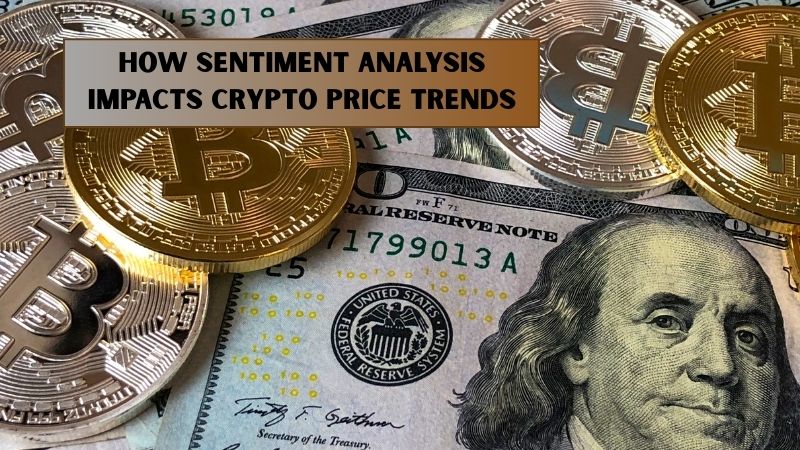Sentiment analysis is a method used to understand people’s opinions, emotions, or attitudes toward something—in this case, cryptocurrencies. It involves using tools or algorithms to scan social media, news, forums, and blogs to determine if the overall tone is positive, negative, or neutral.
In the world of cryptocurrency, where prices are highly volatile and often driven by speculation, sentiment analysis has become a valuable tool. It helps traders and investors predict potential market movements by analyzing how people feel about a coin or the market as a whole.
The Role of Emotions in Crypto Markets
Unlike traditional stock markets, crypto markets are influenced more by emotions than financial reports or earnings. Fear and excitement can trigger large price swings within hours. When a popular influencer tweets positively about a coin, its price can skyrocket. Likewise, a single piece of bad news can cause panic selling.
This emotional nature of crypto markets makes sentiment analysis extremely powerful. It gives insight into what the crowd is feeling before they act. And in crypto, knowing how people feel is just as important as knowing the fundamentals of a project.
How Sentiment Is Measured
Sentiment analysis tools use artificial intelligence to scan online sources. They analyze keywords, hashtags, emojis, and tone to determine the general emotion of a post or article. The result is usually a sentiment score ranging from very negative to very positive.
For example, if thousands of people are tweeting “Bitcoin is going to the moon,” the sentiment score will be strongly positive. On the other hand, if tweets say, “Crypto is crashing,” the sentiment will be negative. These scores are then used by traders and analysts to assess whether prices may rise or fall.
Social Media as a Sentiment Driver
Twitter, Reddit, Telegram, and YouTube play a huge role in shaping crypto sentiment. These platforms often spread news faster than mainstream media. A meme or a viral post can create a wave of optimism or fear, affecting market prices in real-time.
This is why many sentiment analysis tools monitor social media closely. They track the volume of mentions and analyze whether people are expressing support or concern. In some cases, tracking just one influential voice—like Elon Musk—can give a strong indication of where the market might go next.
News Headlines and Market Movement
News headlines can quickly influence investor sentiment. Whether it’s regulatory updates, exchange hacks, or major partnerships, headlines can instantly swing the market. A good headline can send a coin soaring, while negative news can sink it.
Sentiment analysis reads and categorizes these headlines to understand their potential market impact. For instance, a news article titled “Ethereum to Power Major Bank Project” will likely trigger positive reactions. Analysts and bots that process this news can then make buying or selling decisions accordingly.
Sentiment Analysis for Trading Strategies
Crypto traders are increasingly using sentiment analysis as part of their trading strategies. Some use it to confirm a trend. If prices are rising and sentiment is positive, they feel more confident to buy. If sentiment turns negative while prices are still high, it could be a warning signal to sell.
Others use sentiment for short-term trading. They scan for emotional spikes in tweets or comments and act before the crowd. For example, if sentiment becomes highly positive within minutes, a trader might jump in early, ride the wave, and sell for a quick profit.
Predicting Market Trends with Sentiment
Sentiment analysis doesn’t just track current emotions—it can help predict future price trends. When sentiment shifts from negative to positive, it often signals that a rally might be coming. When enthusiasm drops, it could mean the market is due for a pullback.
These sentiment trends act like early warning signs. Combined with other indicators like trading volume or technical charts, they offer a more complete picture of what’s happening in the market. Some hedge funds and big investors use advanced sentiment analysis as part of their data-driven approach.
The Rise of AI-Powered Sentiment Tools
Artificial intelligence has made sentiment analysis more accurate and faster than ever. Modern tools can read millions of tweets, blog posts, and news articles in seconds. They can even detect sarcasm or irony, which was a challenge in earlier tools.
Popular platforms like LunarCrush, Santiment, and The TIE offer sentiment scores for major cryptocurrencies. These tools help both retail traders and professional investors make smarter decisions based on how the public is reacting in real time.
Risks of Relying Too Much on Sentiment
While sentiment analysis is a powerful tool, it’s not perfect. Markets can behave irrationally, and sometimes prices move for reasons that aren’t emotional. Also, bots and fake accounts can manipulate sentiment by flooding social media with misleading posts.
Traders should not rely solely on sentiment scores. It’s important to combine sentiment analysis with fundamental research, technical indicators, and proper risk management. A well-rounded approach ensures that decisions aren’t based only on emotional trends.
Combining Sentiment with Other Tools
To get the most from sentiment analysis, it should be combined with other trading tools. Technical indicators like RSI, MACD, and moving averages help confirm whether a sentiment-driven price move is sustainable.
Fundamental analysis—like checking the team behind a crypto project, the technology, or roadmap—is equally important. Sentiment gives you the emotional view, but fundamentals give you the reality. Together, they make a strong decision-making strategy.
Real-World Examples of Sentiment Impact
One of the most famous examples is the Dogecoin boom in 2021. Much of its rise was fueled by viral tweets and memes, not its technology. The sentiment was overwhelmingly positive, and prices exploded. Later, when the hype faded, so did the price.
Another example is Bitcoin’s price action around ETF approval rumors. Positive sentiment before announcements caused spikes, and negative sentiment during delays caused sharp drops. These reactions were emotional and reflected directly in sentiment scores.
Sentiment Analysis for Long-Term Investors
Even long-term crypto investors can benefit from sentiment analysis. It helps them understand when public opinion is heating up or cooling down. If everyone is overly optimistic, it might be time to take profits. If fear is everywhere, it could be a buying opportunity.
By monitoring sentiment over time, investors can also see which coins are gaining more attention and community support. A coin with growing positive sentiment may have long-term potential, especially if backed by strong fundamentals.
Final Thoughts on Sentiment and Crypto Trends
In the fast-paced world of crypto, knowing how the crowd feels can give you a real edge. Sentiment analysis lets traders and investors peek into the emotional state of the market, often before major price changes occur.
While it’s not a crystal ball, sentiment analysis is a valuable tool for predicting price trends, identifying entry and exit points, and understanding market behavior. When used wisely and alongside other tools, it can help you navigate the rollercoaster ride of cryptocurrency investing more confidently.





